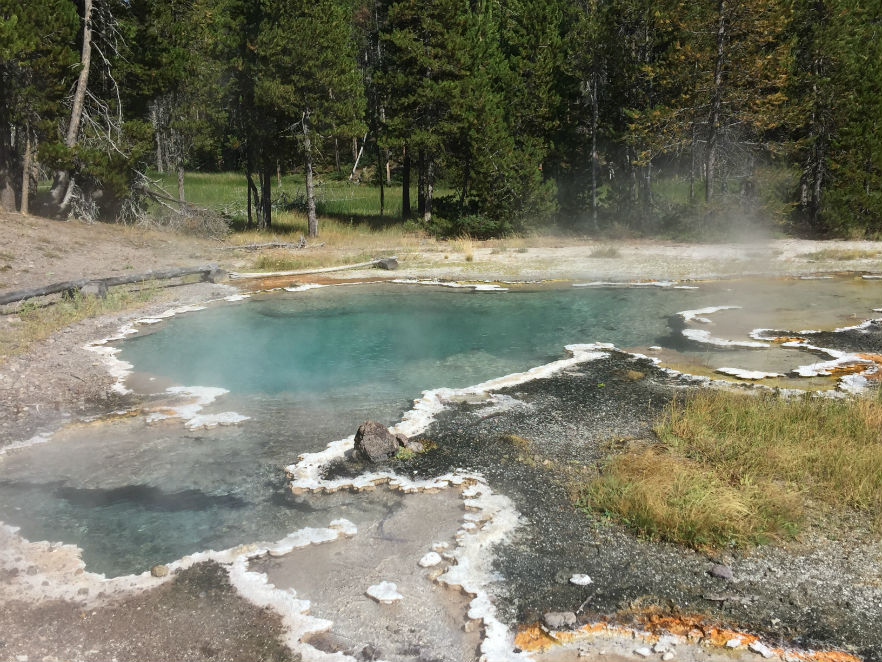Finding New Life

Mitchell Cutter '17 heard about the work of Dr. Scott Miller at the University of Montana during a Whitman biology class. Curious about astrobiology and organisms that thrive in extreme conditions, Cutter applied for an internship with the Miller Laboratory, funded by a Whitman Internship Grant from the Student Engagement Center. There, he studied bacteria living in the hot springs of Yellowstone National Park as part of a project funded by a grant from NASA. Investigating some of the oldest life forms on Earth may provide insight into the biology of extraterrestrial life. Cutter, a biology major and a classics and chemistry minor, writes about his experience there.
A burst of color meets my eye as I look down through the microscope at the gelatinous mix in the Petri dish below. There's a sharp hiss as I touch the small titanium loop to the gel's surface to cool it, amusing myself by "branding" the gel as my own. In Dr. Scott Miller's lab at the University of Montana, I am the caretaker of these splashy streaks spread across my vision. I'm the one keeping these bacteria—usually flourishing in the most inhospitable conditions for life imaginable-barely alive.
My task is to isolate a species of bacteria out of samples taken from White Creek, a hot, spring-fed, flow in Yellowstone National Park. This species is part of a new division of bacteria, called OP10, which  has never been cultivated alone before. If I'm successful in exploring the OP10 division, I'll be able to extract genetic information from the bacteria, and study what adaptations they require for their everyday life.
has never been cultivated alone before. If I'm successful in exploring the OP10 division, I'll be able to extract genetic information from the bacteria, and study what adaptations they require for their everyday life.
You see, the most impressive thing about these little spots of pigment on the plate is that they are resilient; perhaps tougher than anything else on the planet. They have evolved to inhabit an extremely warm and salty environment in White Creek, forming a dense mat that covers the surface of the water. Soon, I'll be taking a trip there to collect more samples from these mats—surprisingly, the bacteria don't last long in the artificial conditions of the lab. The job is thus not without its risks—two visitors have already fallen into Yellowstone hot springs this summer—but that's part of the thrill of working in the field.
As I study the gel below my eye, I look for things that stand out. No one's ever seen this OP10 species before, so the process of isolating it is one of trial and error. Contaminating bacteria make the task much harder to accomplish, and I have to discern what came from White Creek, and what came from my own fingers or breath.
I scrape the titanium loop into a yellow streak on the gel, peeling it off easily and transferring the colony to a fresh plate. Hopefully, the white colonies that seem to follow these yellow-tinged smears everywhere won't make it to this new gel, and I'll have something by itself. The verdict on whether it's OP10 or not will have to wait until DNA extraction. Next, I pinpoint an orange blob, starting to sterilize the loop in a burning flame. My strategy is to transfer every different-looking colony on the plate. It's tiresome work that could make someone go crazy keeping track of all the different things growing, but in an area of such little exploration, a willingness to take on such detail is a must.
As the loop cools, I bend over the scope again, searching for signs of life.